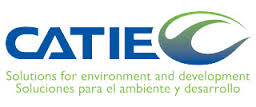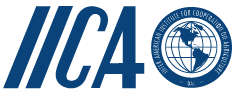Resultados de la búsqueda
Displaying 1 - 10 of 11 results.
Sustainable intensification of agriculture for human prosperity and global sustainability
There is an ongoing debate on what constitutes sustainable intensification of agriculture (SIA). In this paper, we propose that a paradigm for sustainable intensification can be defined and translated into an operational framework for agricultural development. We argue that this paradigm must now be defined—at all scales—in the context of rapidly rising global environmental changes in the Anthropocene, while focusing on eradicating poverty and hunger and contributing to human wellbeing.
Tema(s):
desarrollo de capacidades (DC)cambio climáticoseguridad alimentaria y nutricionalinnovaciónaprendizajepolíticasagricultura sosteniblecadenas de valor...
Año de publicación:
2017Communicating complexity: integrated assessment of trade-offs concerning soil fertility management within African farming systems to support innovation and development
African farming systems are highly heterogeneous: between agroecological and socioeconomic environments, in the wide variability in farmers’ resource endowments and in farm management. This means that single solutions (or ‘silver bullets’) for improving farm productivity do not exist. Yet to date few approaches to understand constraints and explore options for change have tackled the bewildering complexity of African farming systems. In this paper we describe the Nutrient Use in Animal and Cropping systems – Efficiencies and Scales (NUANCES) framework.
Tema(s):
cambio climáticoFormas de explotación agrariainnovaciónpolíticasdesarrollo ruralPequeños agricultores...
Año de publicación:
2010La forma en que la colaboración puede ayudar a incrementar y transformar la agricultura en África
Este articulo aborda el tema de la colaboración y de cómo esta puede ayudar el desarrollo y la innovación agrícola en África.
Tema(s):
desarrollo de capacidades (DC)Formas de explotación agrariainnovaciónprocesos de múltiples partes interesadasparticipación del sector públicodesarrollo ruralagricultura sosteniblecadenas de valorAgroindustria...
Año de publicación:
2018How collaboration can help grow and transform agriculture in Africa
This article gives insights about collaboration and how this process can help agricultural innovation in Africa.
Tema(s):
desarrollo de capacidades (DC)Formas de explotación agrariainnovaciónprocesos de múltiples partes interesadasparticipación del sector públicodesarrollo ruralagricultura sosteniblecadenas de valorAgroindustria...
Año de publicación:
2018Cadenas agroalimentarias: un instrumento para fortalecer la institucionalidad del sector agrícola y rural
En este informe se describen las experiencias y enfoques de la constitución de cadenas agroalimentarias y se plantea la necesidad de desarrollar una nueva institucionalidad y formas de cooperación técnica para el fortalecimiento del sector agrícola y rural. Se espera que las cadenas agroalimentarias se constituyan en mecanismos de diálogo e instrumentos de gestión para la competitividad y la toma de decisiones según las demandas de los Estados Miembros del IICA.
Tema(s):
innovaciónaprendizaje institucionalevaluación de las necesidadesdesarrollo ruralcadenas de valorAgroindustria...
Año de publicación:
2009Análisis de las capacidades institucionales para el fortalecimiento de la gestión agroempresarial y asociativa: los casos de Guatemala, Ecuador y Paraguay
El objetivo del proyecto es contribuir al fortalecimiento de la institucionalidad relacionada con el desarrollo de las capacidades agroempresariales y organizativas de los productores y agroempresarios para vincularse de manera rentable, sostenible y competitiva al mercado en Ecuador, Guatemala y Paraguay
Tema(s):
Año de publicación:
2011Metodología para identificar necesidades de formación agroempresarial y asociativa
Este libro busca Identificar la capacidad institucional (pública y privada) de contribuir al fortalecimiento empresarial y asociativo de productores y agroempresarios; Construir instrumentos de gestión del conocimiento (bienes públicos) que permitan fortalecer la capacidad institucional de apoyar el desarrollo agroempresarial y asociativo de los productores, con base en el estudio de la realidad de los “países bandera”, así como en el análisis de otras experiencias exitosas; Desarrollar, y validar, arreglos e instrumentos institucionales, y Diseñar una estrategia para promover la difusión
Tema(s):
Año de publicación:
2012Afinet: agroforestry innovation thematic network
AFINET is one of the seventeen thematic networks that the European Union has financed under the H2020 framework and it is supervised by the EIP-Agri in order to foster innovation in Europe. The main topic of AFINET is agroforestry a practice of deliberately integrating woody vegetation with crops and/or animal systems and the promotion of this practice to foster climate changes. AFINET follows a multi-actor approach linked to the nine Regional Innovations Networks created to identify main challenges and develop main innovations about agroforestry.
Tema(s):
Formas de explotación agrariainnovaciónprocesos de múltiples partes interesadasredesagricultura sostenible...
Año de publicación:
2018Culturing Development: Bananas, Petri Dishes and ‘Mad Science’
This paper analyses a biotechnology-focused project which aims to promote the development and adoption of tissue culture bananas by small-scale farmers in Kenya. The paper highlights the generation of several important narratives that are used to justify the development and dissemination of this technology. First, a disaster narrative, a series of claims regarding rural livelihoods and banana production in Kenya, is generated. This creates a political and technical space for the creation of a new science that can solve these problems.
Tema(s):
desarrollo de capacidades (DC)evaluación de impactosistemas de innovacióninvestigacióndesarrollo rural...
Año de publicación:
2007Smoke, mirrors and poverty: communication, biotechnological innovation and development
Communication is essential to making biotechnology and genomics relevant to developing countries and poor people. Few would disagree with that. But many are sceptical about public relations efforts to impose inappropriate technological ‘solutions’ on developing countries. This paper is a partial reflection on how PR and advocacy ‘mixes’ can be understood and whether they can be useful to innovation in developing country contexts.
Tema(s):
abogacía/ promocióndesarrollo de capacidades (DC)comunicaciónsistemas de innovacióndesarrollo rural...
Año de publicación:
2005Páginas
Sorting block
Filtrar por tema(s)
- advocacy (1) Apply advocacy filter advocacy
- capacity development (CD) (7) Apply capacity development (CD) filter capacity development (CD)
- climate change (2) Apply climate change filter climate change
- communication (1) Apply communication filter communication
- farming systems (4) Apply farming systems filter farming systems
- food and nutrition security (1) Apply food and nutrition security filter food and nutrition security
- impact assessment (1) Apply impact assessment filter impact assessment
- innovation systems (9) Apply innovation systems filter innovation systems
- knowledge and information systems (1) Apply knowledge and information systems filter knowledge and information systems
- learning (2) Apply learning filter learning
- multi-stakeholder processes (3) Apply multi-stakeholder processes filter multi-stakeholder processes
- needs assessment (3) Apply needs assessment filter needs assessment
- networks (1) Apply networks filter networks
- participatory approaches (1) Apply participatory approaches filter participatory approaches
- policies (3) Apply policies filter policies
- public sector engagement (2) Apply public sector engagement filter public sector engagement
- research (1) Apply research filter research
- rural development (6) Apply rural development filter rural development
- sustainable agriculture (4) Apply sustainable agriculture filter sustainable agriculture
- value chains (6) Apply value chains filter value chains
Filtrar por autor(es)
- Adekunle A. A. (9) Apply Adekunle A. A. filter Adekunle A. A.
- Agrinatura (43) Apply Agrinatura filter Agrinatura
- Aguilar-Ávila J. (10) Apply Aguilar-Ávila J. filter Aguilar-Ávila J.
- Asia-Pacific Islands Rural Advisory Services Network (APIRAS) (12) Apply Asia-Pacific Islands Rural Advisory Services Network (APIRAS) filter Asia-Pacific Islands Rural Advisory Services Network (APIRAS)
- CDAIS project (98) Apply CDAIS project filter CDAIS project
- Chia E. (10) Apply Chia E. filter Chia E.
- Commission on Sustainable Agriculture Intensification (CoSAI) (17) Apply Commission on Sustainable Agriculture Intensification (CoSAI) filter Commission on Sustainable Agriculture Intensification (CoSAI)
- Devaux A. (10) Apply Devaux A. filter Devaux A.
- Dhehibi B. (11) Apply Dhehibi B. filter Dhehibi B.
- Dror I. (24) Apply Dror I. filter Dror I.
- Fatunbi O. (15) Apply Fatunbi O. filter Fatunbi O.
- Faure G. (10) Apply Faure G. filter Faure G.
- Food and Agriculture Organization of the United Nations (12) Apply Food and Agriculture Organization of the United Nations filter Food and Agriculture Organization of the United Nations
- Food and Agriculture Organization of the United Nations (17) Apply Food and Agriculture Organization of the United Nations filter Food and Agriculture Organization of the United Nations
- Food and Agriculture Organization of the United Nations (FAO) (142) Apply Food and Agriculture Organization of the United Nations (FAO) filter Food and Agriculture Organization of the United Nations (FAO)
- Food and Agriculture Organization of the United Nations ( FAO ) (81) Apply Food and Agriculture Organization of the United Nations ( FAO ) filter Food and Agriculture Organization of the United Nations ( FAO )
- Hall, A. (24) Apply Hall, A. filter Hall, A.
- Hall A. (12) Apply Hall A. filter Hall A.
- Hoekstra D. (11) Apply Hoekstra D. filter Hoekstra D.
- IICA (48) Apply IICA filter IICA
- International Fund for Agricultural Development (18) Apply International Fund for Agricultural Development filter International Fund for Agricultural Development
- International Fund for Agricultural Development (IFAD) (13) Apply International Fund for Agricultural Development (IFAD) filter International Fund for Agricultural Development (IFAD)
- International Livestock Research Institute (10) Apply International Livestock Research Institute filter International Livestock Research Institute
- Klerkx L. (47) Apply Klerkx L. filter Klerkx L.
- Klerkx, L. (25) Apply Klerkx, L. filter Klerkx, L.
- Landini, F. (11) Apply Landini, F. filter Landini, F.
- Latin American Network for Rural Extension Services (RELASER) (14) Apply Latin American Network for Rural Extension Services (RELASER) filter Latin American Network for Rural Extension Services (RELASER)
- Leeuwis C. (16) Apply Leeuwis C. filter Leeuwis C.
- Leeuwis, C. (15) Apply Leeuwis, C. filter Leeuwis, C.
- Lundy M. (18) Apply Lundy M. filter Lundy M.
- Nichterlein K. (9) Apply Nichterlein K. filter Nichterlein K.
- Ojijo N.K.O. (13) Apply Ojijo N.K.O. filter Ojijo N.K.O.
- Organisation for Economic Co-operation and Development (12) Apply Organisation for Economic Co-operation and Development filter Organisation for Economic Co-operation and Development
- Qaim M. (58) Apply Qaim M. filter Qaim M.
- Rendon-Medel R. (11) Apply Rendon-Medel R. filter Rendon-Medel R.
- Sartas M. (16) Apply Sartas M. filter Sartas M.
- Schut, M. (10) Apply Schut, M. filter Schut, M.
- Schut M. (44) Apply Schut M. filter Schut M.
- Sulaiman, R. V. (19) Apply Sulaiman, R. V. filter Sulaiman, R. V.
- Sulaiman R. V. (11) Apply Sulaiman R. V. filter Sulaiman R. V.
- TAP Secretariat (26) Apply TAP Secretariat filter TAP Secretariat
- Temple L. (14) Apply Temple L. filter Temple L.
- The World Bank (13) Apply The World Bank filter The World Bank
- Triomphe B. (9) Apply Triomphe B. filter Triomphe B.
- Tropical Agriculture Platform (TAP) (43) Apply Tropical Agriculture Platform (TAP) filter Tropical Agriculture Platform (TAP)
- University of Evora (13) Apply University of Evora filter University of Evora
- various authors (44) Apply various authors filter various authors
- Velasco C. (9) Apply Velasco C. filter Velasco C.
- World Bank (61) Apply World Bank filter World Bank
- World Bank Group (18) Apply World Bank Group filter World Bank Group
Filtrar por países
Filtrar por editorial(es)
- Inter-American Institute for Cooperation on Agriculture (3) Apply Inter-American Institute for Cooperation on Agriculture filter Inter-American Institute for Cooperation on Agriculture
- Elsevier (2) Apply Elsevier filter Elsevier
- European Agroforestry Federation (1) Apply European Agroforestry Federation filter European Agroforestry Federation
- Springer (1) Apply Springer filter Springer
- Taylor & Francis Group (1) Apply Taylor & Francis Group filter Taylor & Francis Group
- The Conversation (1) Apply The Conversation filter The Conversation
- The Open University (1) Apply The Open University filter The Open University
Filtrar por region
Filtrar por tipo
- book (2) Apply book filter book
- brief (1) Apply brief filter brief
- conference paper (1) Apply conference paper filter conference paper
- journal article (4) Apply journal article filter journal article
- magazine article (2) Apply magazine article filter magazine article
- working paper (1) Apply working paper filter working paper







